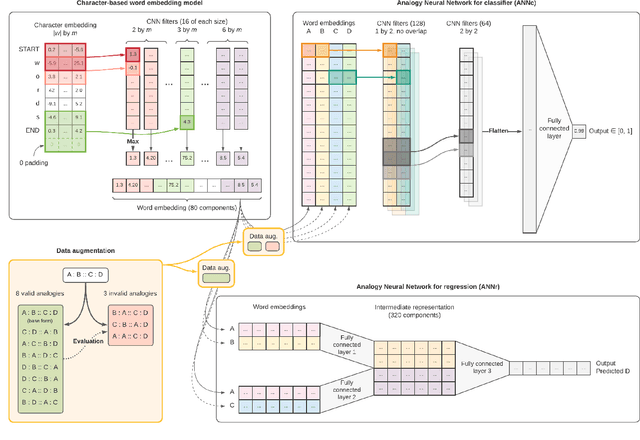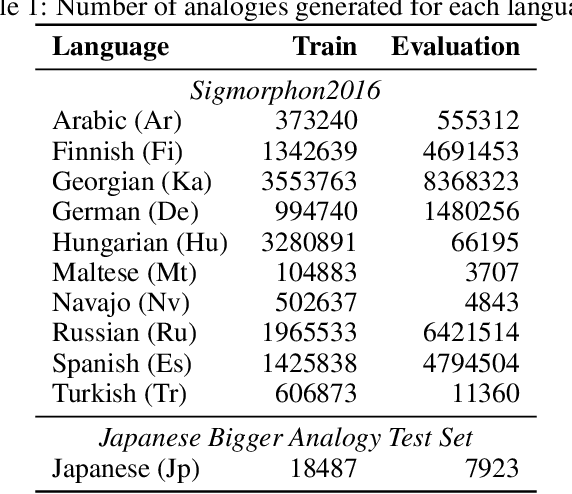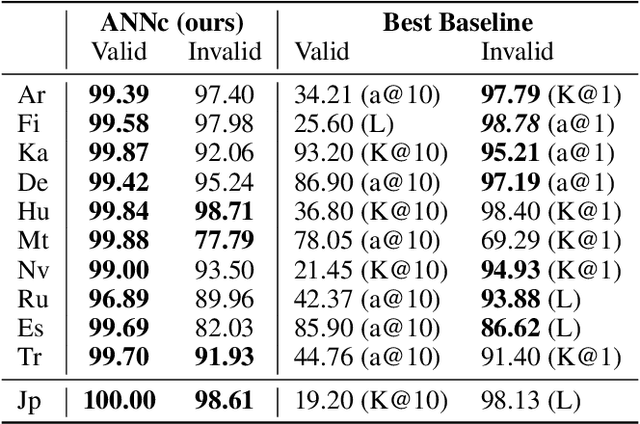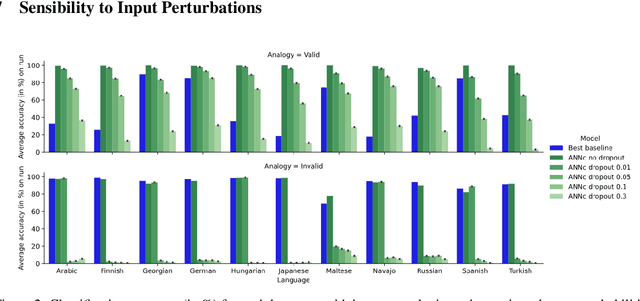Tackling Morphological Analogies Using Deep Learning -- Extended Version
Paper and Code
Nov 09, 2021



Analogical proportions are statements of the form "A is to B as C is to D". They constitute an inference tool that provides a logical framework to address learning, transfer, and explainability concerns and that finds useful applications in artificial intelligence and natural language processing. In this paper, we address two problems, namely, analogy detection and resolution in morphology. Multiple symbolic approaches tackle the problem of analogies in morphology and achieve competitive performance. We show that it is possible to use a data-driven strategy to outperform those models. We propose an approach using deep learning to detect and solve morphological analogies. It encodes structural properties of analogical proportions and relies on a specifically designed embedding model capturing morphological characteristics of words. We demonstrate our model's competitive performance on analogy detection and resolution over multiple languages. We provide an empirical study to analyze the impact of balancing training data and evaluate the robustness of our approach to input perturbation.
 Add to Chrome
Add to Chrome Add to Firefox
Add to Firefox Add to Edge
Add to Edge